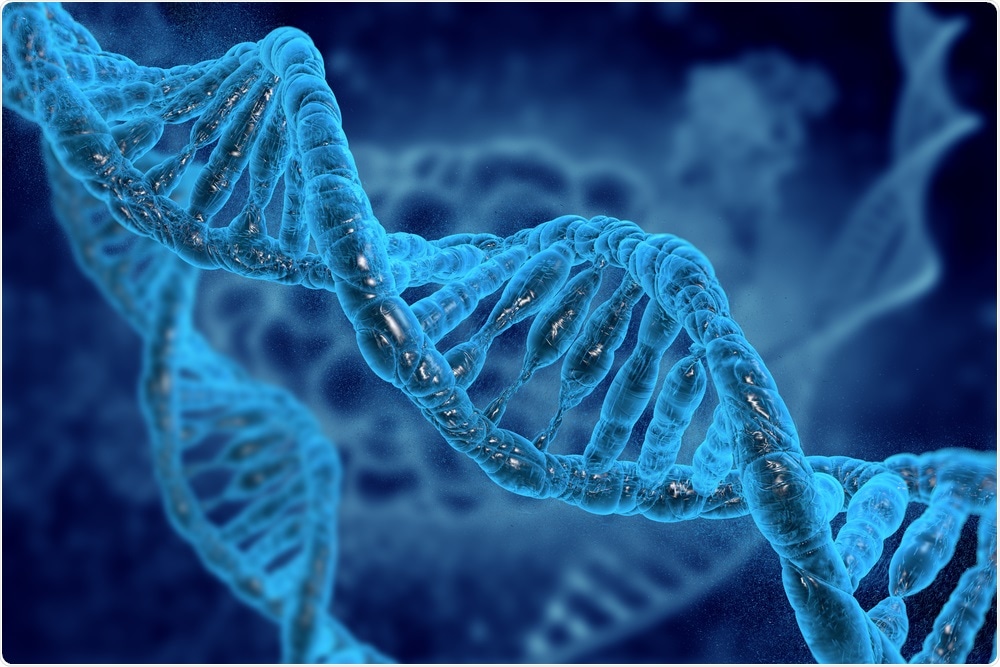Scientists at Columbia University in New York have created a method that resolves two major problems commonly encountered in synthetic protein engineering.
The method prevents a gene that encodes a synthetic protein from spreading into the wild and also stabilizes it so that it cannot mutate and lose its function over time.
Study author Tomasz Blazejewski says such methods “could be useful for agricultural purposes where you don’t want a synthetic gene to spread to natural crops or in any situation when you don’t want your synthetic DNA to escape from the lab.”
 vitstudio | Shutterstock
vitstudio | Shutterstock
Protein engineering is a relatively new field
Protein engineering is a relatively new field that involves the creation of synthetic proteins that have never been seen before in nature.
Engineers typically make a new protein by altering the gene that encodes for the naturally occurring version.
Today, various synthetic proteins are available, ranging from stain-removing enzymes that improve the effectiveness of detergents through to a new type of long-acting insulin that is used to treat millions of people with diabetes.
However, two major challenges that protein engineers face is containing the gene that encodes the protein so that it does not spread into surrounding organisms and ensuring the gene does not mutate over time and lose its function.
As reported in the journal Science, systems biologist Harris Wang and colleagues have now developed a method that addresses both of these problems.
The new methodology was inspired by viruses
The new method was inspired by observations the researchers made about overlapping genes found in viruses. The overlapped genes occupy the same sequence of DNA but are read in different time frames so that two separate proteins are still made.
“Overlapping genes yield multiple distinct proteins when translated in alternative reading frames of the same nucleotide sequence,” writes the team.
When the genes are overlapped, a random mutation occurring in the sequence may not affect one gene, but may well damage the second gene, essentially locking the DNA sequence in: “We thought we could exploit this idea for synthetic biology,” says Wang.
How does the method work?
The technique the team developed, called CAMEOS, generates a single DNA sequence containing two genes that produce two distinct proteins.
An algorithm within CAMEOS takes the genetic codes of two naturally occurring genes and combines them into a single DNA sequence. To achieve this, the nucleotide bases within each gene need to be altered, but without this affecting how the resulting protein functions.
To identify which base changes are most likely to succeed at this, CAMEOS scans a database made up of hundreds of thousands of gene sequences.
By combining the two different genes in one DNA sequence, the algorithm stops synthetic genes from acquiring mutations and prevents their transfer to other organisms.
The final predicted sequences are then tested in living cells using high-throughput techniques that enable hundreds of thousands of sequences to be tested over a short period of time.
Ten years ago, such technologies were not available, says Wang:
We didn’t have enough sequences in the database to make informed predictions and we didn’t have a way to synthesize long DNA sequences for testing our predictions.”
Stopping gene transfer to surrounding bacteria
To contain the synthetic gene and stop it from escaping into the wild, CAMEOS was used to combine it with a gene that codes for a toxic protein. This meant that once the entangled gene was inserted into bacterial cells designed to produce the antidote, it generated both the synthetic gene and the toxic protein.
Although surrounding bacterial cells could take up the entangled gene, they would immediately die once the toxin was produced.
“When a gene of interest was synthetically overlapped with a toxin gene, its horizontal gene transfer frequency between bacteria was strongly suppressed,” say the authors.
Stabilizing an engineered gene to prevent loss of function
When the entangled gene contains a DNA sequence in this way, it also stabilizes an engineered gene and stops a synthetic protein from losing its function and from acquiring any unwanted one.
In synthetic protein engineering, methods that will stabilize genetically engineered functions and confine recombinant DNA to intended hosts are needed to cope with natural mutation accumulation and pervasive lateral gene flow, explains the team.
“Instability is an issue now in industries that use vats of cells to produce engineered proteins. The reaction will only run for a certain amount of time before mutations take over,” says co-author Hsing-I Ho. “With CAMEOS, it may be possible to sustain the reaction for longer.”
The researchers say that this generalizable strategy for the design, building and testing of overlapping genes, helps to stabilize vertical gene evolution and restrict horizontal gene flow.
The team concludes:
This work enables deeper exploration of natural and engineered overlapping genes and facilitates enhanced genetic stability and biocontainment in emerging applications.”
Journal reference:
Blazejewski, T., et al. (2019). Synthetic sequence entanglement augments stability and containment of genetic information in cells. Science. DOI: 10.1126/science.aav5477.